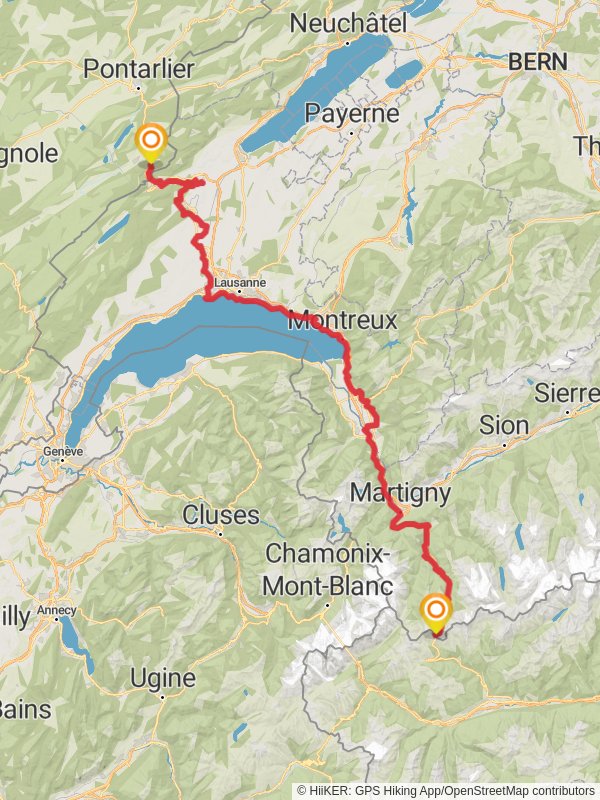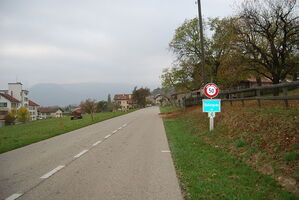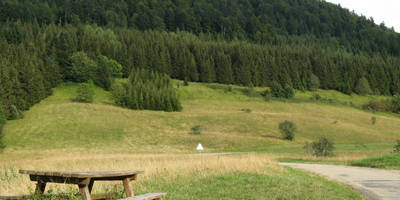196.6 km
~9 day
3911 m
“Traverse Switzerland's Via Francigena, a historic pilgrimage meets alpine odyssey, rich in culture and natural splendor.”
Embarking on the Via Francigena through Switzerland offers a unique blend of historical pilgrimage and alpine hiking adventure. This ancient route, once trodden by pilgrims heading to Rome, stretches approximately 197 kilometers (about 122 miles) and ascends roughly 3900 meters (nearly 12,800 feet) in elevation.
Starting the Journey The trailhead is located near Pontarlier, France, just across the Swiss border. To reach the starting point, hikers can utilize public transportation by taking a train to the Pontarlier station and then a short taxi or bus ride to the trailhead. Those driving can park their vehicles in Pontarlier before beginning their trek.
Through the Valleys and Passes As you set out, the path takes you through the scenic Jura Mountains, where lush valleys are interspersed with clear streams. The route meanders through quaint Swiss villages, such as Orbe and Lausanne, where hikers can marvel at well-preserved medieval architecture and perhaps stop for a rest at local inns.
Cultural and Historical Landmarks One of the most significant landmarks along the Via Francigena is the Great St. Bernard Pass, an iconic mountain pass lying at 2,469 meters (8,100 feet) above sea level. This historic crossing has been used since the Roman times and is home to the famous hospice founded by St. Bernard of Montjoux, which has provided refuge to travelers for centuries.
Flora and Fauna The trail offers a chance to witness the diverse Swiss flora and fauna. As you ascend into higher altitudes, the vegetation changes from deciduous forests to coniferous trees and alpine meadows. Keep an eye out for local wildlife such as chamois, marmots, and eagles.
Navigating the Trail For navigation, HiiKER is an excellent tool to keep you on the right path. It provides detailed maps and waypoints that are crucial for the more remote and challenging sections of the trail.
Accommodation and Resupply Points Along the Via Francigena, there are numerous opportunities to resupply and find accommodation. Towns like Martigny and the region around Lake Geneva offer a range of services, from grocery stores to hotels and hostels. It's advisable to book accommodations in advance, especially during the high season.
Preparing for the Hike Given the trail's difficulty rating, it's essential to be well-prepared. Ensure you have appropriate gear for varying weather conditions, as the high elevations can bring about sudden changes. It's also wise to carry a first-aid kit, sufficient water, and snacks between resupply points.
End of the Trail The Swiss section of the Via Francigena concludes in the charming town of Aosta, Italy. From here, hikers can continue their journey towards Rome or take public transport back to Switzerland or other destinations.
Reviews
User comments, reviews and discussions about the Via Francigena - Switzerland, France.
5.0
average rating out of 5
4 rating(s)






